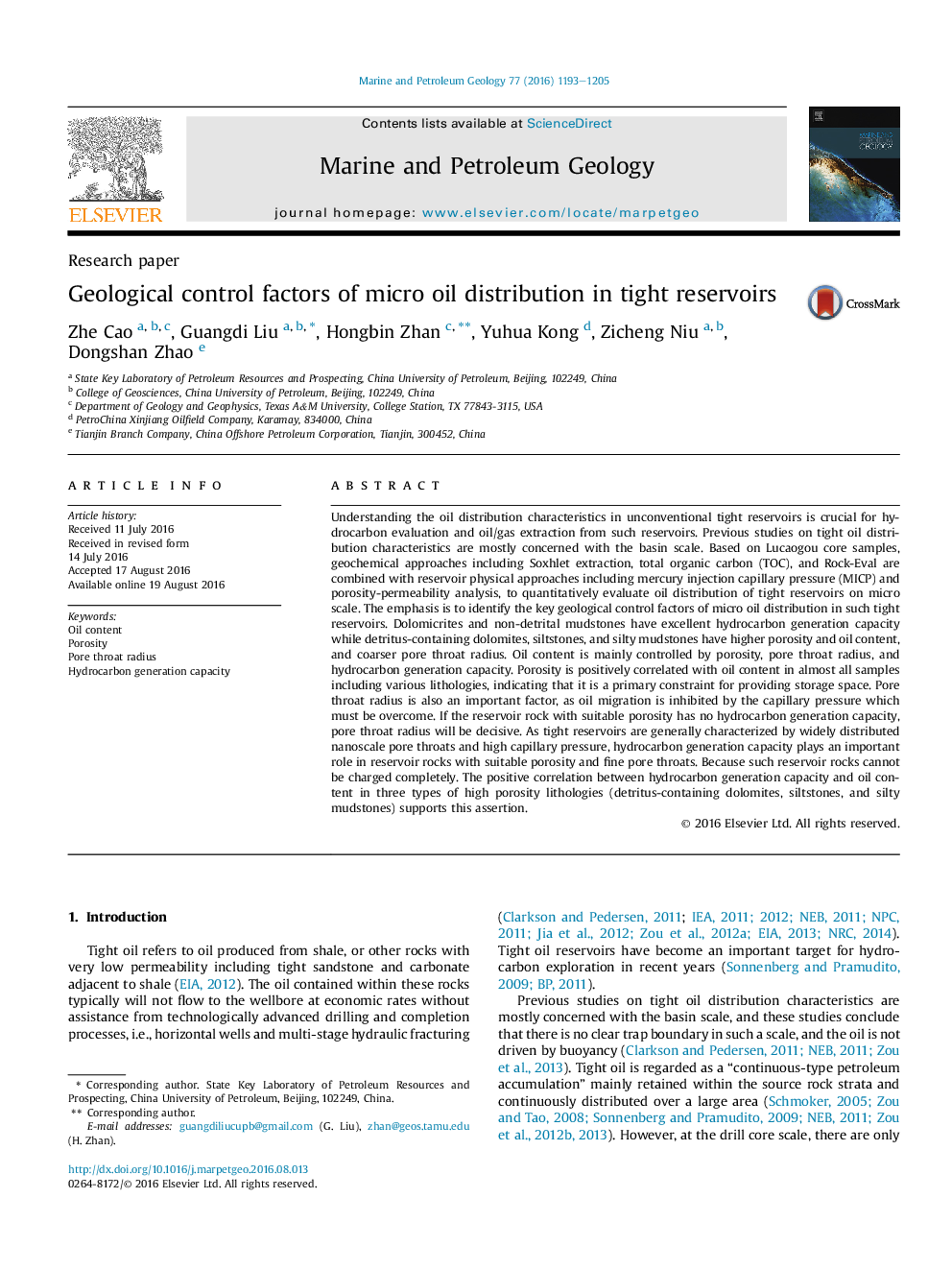| کد مقاله | کد نشریه | سال انتشار | مقاله انگلیسی | نسخه تمام متن |
|---|---|---|---|---|
| 6434681 | 1637150 | 2016 | 13 صفحه PDF | دانلود رایگان |
- Distribution of tight oil at the microscopic scale and the control factors of its oil heterogeneity are discussed.
- Most of the known lithologies of tight reservoir are included in this study, making it with reference values.
- Geological control factors on micro oil distribution are synthetically discussed.
Understanding the oil distribution characteristics in unconventional tight reservoirs is crucial for hydrocarbon evaluation and oil/gas extraction from such reservoirs. Previous studies on tight oil distribution characteristics are mostly concerned with the basin scale. Based on Lucaogou core samples, geochemical approaches including Soxhlet extraction, total organic carbon (TOC), and Rock-Eval are combined with reservoir physical approaches including mercury injection capillary pressure (MICP) and porosity-permeability analysis, to quantitatively evaluate oil distribution of tight reservoirs on micro scale. The emphasis is to identify the key geological control factors of micro oil distribution in such tight reservoirs. Dolomicrites and non-detrital mudstones have excellent hydrocarbon generation capacity while detritus-containing dolomites, siltstones, and silty mudstones have higher porosity and oil content, and coarser pore throat radius. Oil content is mainly controlled by porosity, pore throat radius, and hydrocarbon generation capacity. Porosity is positively correlated with oil content in almost all samples including various lithologies, indicating that it is a primary constraint for providing storage space. Pore throat radius is also an important factor, as oil migration is inhibited by the capillary pressure which must be overcome. If the reservoir rock with suitable porosity has no hydrocarbon generation capacity, pore throat radius will be decisive. As tight reservoirs are generally characterized by widely distributed nanoscale pore throats and high capillary pressure, hydrocarbon generation capacity plays an important role in reservoir rocks with suitable porosity and fine pore throats. Because such reservoir rocks cannot be charged completely. The positive correlation between hydrocarbon generation capacity and oil content in three types of high porosity lithologies (detritus-containing dolomites, siltstones, and silty mudstones) supports this assertion.
Journal: Marine and Petroleum Geology - Volume 77, November 2016, Pages 1193-1205
